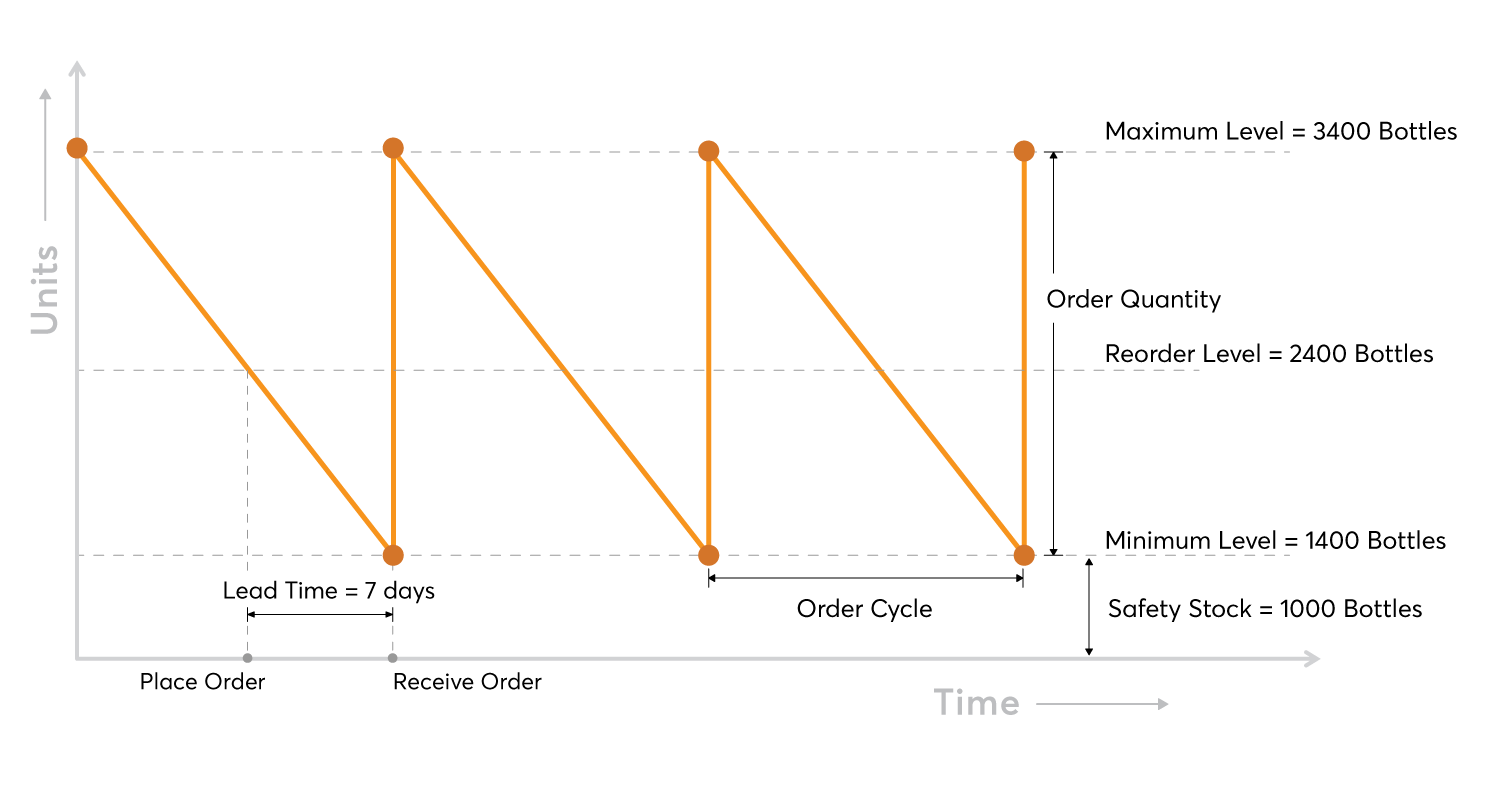What is a reorder point?
A reorder point (ROP) is a specific level at which your stock needs to be replenished. In other words, it tells you when to place an order so you won’t run out of stock.
Significance of reorder points
If you’re a business owner, knowing when to order more stock is important. If you order when you still have a lot of stock on hand, it will lead to extra stock piling up, which will increase your holding costs. If you order when you have zero stock on hand, you’ll be unable to make sales for as long as it takes to receive the order. The your vendor takes to supply the items, the more sales you’ll be losing. Setting a reorder point helps you optimize your inventory, replenish your stock of individual items at the right time, and meet your market demand without going out of stock.
How to calculate a reorder point
You need to know when to order each item in your inventory separately, because different items have different sell-through rates. To calculate the ROP for each item, you’ll need to know the following parameters:
Lead time: Time taken (in days) for your vendor to fulfill your order
Safety stock: The amount of extra stock, if any, that you keep in your inventory to help avoid stockouts
Daily average usage: The number of sales made in an average day of that particular item
Reorder Point Formula
Let’s look at how to calculate a reorder point both with and without safety stock. Then we’ll cover how to handle reorder points when you have multiple vendors.
- Determining ROP with safety stock
- Determining ROP without safety stock
Determining ROP with safety stock
This method is used by businesses that keep extra stock on hand in case of unexpected circumstances. To calculate a reorder point with safety stock, multiply the daily average usage by the lead time and add the amount of safety stock you keep.

Let’s understand this with an example. Suppose you’re a perfume retailer who sells 200 bottles of perfume every day. Your vendor takes one week to deliver each batch of perfumes you order. You keep enough excess stock for 5 days of sales, in case of unexpected delays. Now, what should your reorder point be?
Lead time = 7 days
Safety stock = 5 days x 200 bottles = 1000 bottles
ROP = (200 x 7) + 1000 = 2400 bottles
The order for the next batch of perfume should be placed when there are 2400 bottles left in your inventory.
Graph
This simplified reorder point graph shows you the relationship between your reorder point, stock level, and safety stock over a period of time. It helps you visualize how your reorder point is based on your sales trends.

In the above graph, the maximum level is the sum of the safety stock and the order quantity, or 3400 bottles. Once the stock left in your inventory reaches the reorder level of 2400 bottles units, you should place a new purchase order with your vendor. The minimum level, which is 1400 bottles, will help you fulfill your orders until your ordered stock reaches the warehouse. Once the new order is received in your warehouse, the stock level returns to the maximum level of 3400 bottles units.
Determining ROP without safety stock
Businesses which follow lean inventory practices or a just-in-time management strategy usually don’t have safety stock. In such cases, your reorder point can be calculated by multiplying your daily average sales by your lead time. Typically, when you don’t have safety stock, your reorder level and the frequency of your orders tend to be higher.

Taking the above perfume example without including safety stock, your ROP should be:
ROP = 200 x 7 = 1400 bottles
Therefore, you should place an order for the next batch of perfumes when you have 1400 bottles left.
How to calculate ROP with different vendors
You may purchase items in your inventory from various vendors, and different vendors have different lead times. Therefore, it’s best to think of your reorder point on an individual item level.
For example, let’s suppose that you’re a retailer who sells water bottles and snack boxes. The two items are purchased from different vendors with different lead times. The water bottles take one day to get delivered (lead time = 1 day) and the snack boxes take four days (lead time= 4 days). In a typical day, you sell 5 water bottles and 10 snack boxes.
Without safety stock, your ROP with the vendor who delivers the water bottles should be:
ROP = 5 x 1 = 5 bottles
When you have 5 bottles left, that means you have one day of sales before you run out of stock. Since your lead time is also one day, the new stock should arrive just in time for you to continue selling without interruption.
Similarly, your ROP with the vendor who delivers the snack boxes should be
ROP = 4 x 10 = 40 boxes
You should reorder when you have 40 boxes of stock left in your inventory, which is four days of stock. Given that your lead time is also four days, the new stock should arrive just in time for you to continue selling without interruption.
A reorder point is crucial for effective inventory management. It saves holding costs and prevents stockouts, overstocking, and lost sales by ensuring that sufficient stock is always available in your inventory.